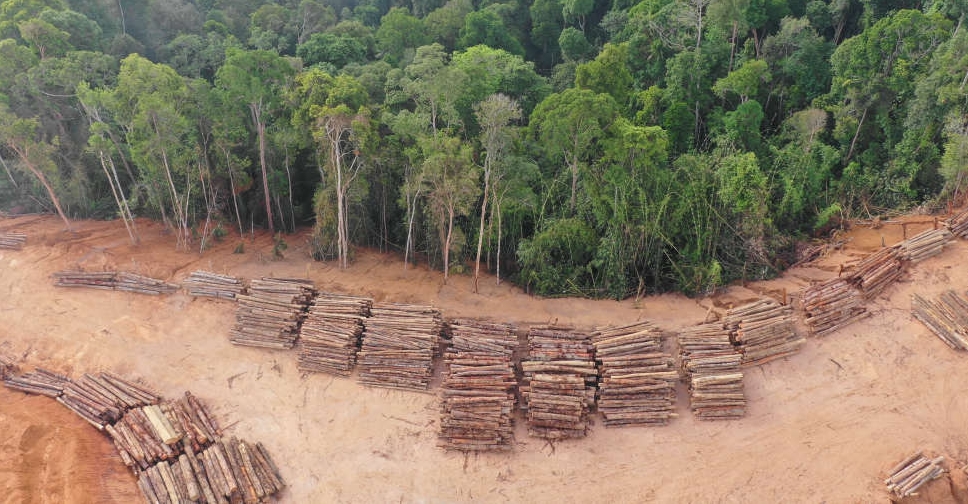
Tropical forest loss declined last year, but other indicators show that the world's woodlands remain under immense pressure, according to analysis released on Thursday by the Global Forest Watch monitoring project.
The loss of primary forests - those untouched by people and sometimes known as old-growth forests - in the tropics declined 9 per cent last year compared to 2022.
But researchers from Global Forest Watch - a project of the Washington-based nonprofit research organisation World Resources Institute - said the destruction remains stubbornly high. The world last year lost about 37,000 square kilometres (14,000 square miles) of tropical primary forest, an area nearly as big as Switzerland and larger than the US state of Maryland.
Declining forest loss in Brazil and Colombia was largely offset by greater losses elsewhere, Global Forest Watch director Mikaela Weisse told a press briefing.
"The world took two steps forward, two steps back," Weisse said.
Scientists consider tropical primary forests to be among the most precious as their lush vegetation is the most densely packed with carbon. These forests also are treasure troves of biodiversity. The Amazon rainforest, for instance, is home to at least 10 per cent of Earth's known species.
Last year's tropical primary forest loss caused greenhouse gas emissions equivalent to half of US emissions caused by the burning fossil of fuels annually, Weisse said.
Brazil, the Democratic Republic of Congo and Bolivia topped the ranking of tropical countries with the most primary forest loss. That is in spite of destruction in Brazil falling 36 per cent, as President Luiz Inacio Lula da Silva pursued aggressive conservation policies, particularly regarding the Amazon, Weisse said.
Neighboring Colombia experienced a 49 per cent drop in forest loss. President Gustavo Petro made environmental preservation a key part of the peace process with armed groups that dominate jungle areas, Weisse noted.
Forest destruction in the Democratic Republic of Congo remained relatively stable but high at around 5,000 square km.
Bolivia experienced record-high primary forest loss for the third year in a row, with destruction surging 27 per cent. Agricultural production and fires drove most of the loss.
Deforestation globally rose 3.2 per cent in 2023, according to the report.
Forest loss includes natural destruction such as wildfires, pests and windstorms of woodlands that may grow back. Deforestation refers to people permanently converting woodlands to other uses such as agriculture and is harder to measure.
More than 140 countries in 2021 committed to end deforestation by the end of the decade, a goal that requires huge declines in destruction each year, World Resources Institute forests director Rod Taylor said.
"We are far off track and trending in the wrong direction when it comes to reducing global deforestation," Taylor said.
Tree cover loss increased 24 per cent in all forests globally in 2022, mostly because of enormous wildfires in Canada.
Canada's forest loss of more than 80,000 square km was three times higher than any year on record, offsetting a decline in forest loss in the rest of the world.
"That is one of the biggest anomalies on record," University of Maryland researcher Matt Hansen said.
While deforestation in the tropics is a human-caused driver of climate change, the fires in Canada are more of a symptom of global warming, which leads to the hotter, drier conditions that fuel bigger blazes.
"It's a big deal, and it's a cautionary tale for climate impacts to fire," Hansen said.


 Israeli attacks on Gaza killed 60 people in 24 hours
Israeli attacks on Gaza killed 60 people in 24 hours
 Trump fires National Security Agency director
Trump fires National Security Agency director
 Israel steps up Syria strikes, says Turkey aims for 'protectorate'
Israel steps up Syria strikes, says Turkey aims for 'protectorate'
 US sending Israel 20,000 assault rifles that Biden delayed
US sending Israel 20,000 assault rifles that Biden delayed



